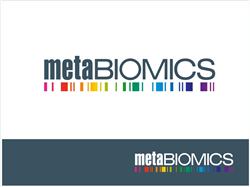Dr. Gillevet is using state of the art molecular techniques to study problems in Molecular Environmental Sciences and Genomic Evolution. He is working on several molecular systematics projects which include: the use of molecular methods to characterize the genus Pseudomonas and Bacillus; the development of a prototype database to integrate phenotypic, metabolic, and genotypic data; the use of molecular methods to characterize the toxic dinoflagellate Pfiesteria piscicida; use of molecular techniques to monitor halophilic microbial communities, use of molecular techniques to monitor soil ecosystems during bioremediation processes, and the development of a new methods and techniques to detect molecular markers for scanning natural microbial populations.
He is involved in the bioinformatics program at IB3, developing Laboratory Information Management (LIMS) systems for large scale sequencing projects, implementing analytical tools for molecular systematics and microbial classification, and modelling non-linear metabolic systems. He is also developing new mass spectrometry technology for high throughput genomic sequencing and environmental monitoring.
EDUCATION
1976-1982 Univ. of Manitoba Biochemistry Ph.D.
1972-1976 Univ. of Toronto Microbiology B.Sc.
PROFESSIONAL EXPERIENCE
2002-present:
Associate Professor,
Department of Environmental Sciences and Policy
George Mason University, Fairfax, Virginia 22030
2000-present:
Associate Professor,
The School of Computational Sciences
George Mason University, Fairfax, Virginia 22030
1996-2000:
Research Associate Professor,
The Institute for Bioscience, Bioinformatics and Biotechnology
George Mason University, Fairfax, Virginia 22030
1994- present:
Affiliate Professor,
Department of Biology,
George Mason University, Fairfax, Virginia 22030
1993- 2000:
Affiliate Associate Professor,
Institute for Computational Sciences and Informatics,
George Mason University, Fairfax, Virginia 22030
At George Mason University, we are using state of the art molecular techniques to study problems in Molecular Environmental Sciences and Genomic Evolution. We are working on several molecular systematics projects which include: the use of molecular methods to characterize the genus Pseudomonas and Bacillus; the development of a prototype database to integrate phenotypic, metabolic, and genotypic data; the use of molecular methods to characterize the toxic dinoflagellate Pfiesteria piscicida; use of molecular techniques to monitor halophilic microbial communities, use of molecular techniques to monitor soil ecosystems during bioremediation processes, and the development of a new methods and techniques to detect molecular markers for scanning natural microbial populations. We are also developing new capillary technology technology for high throughput genomic sequencing and environmental monitoring.
1993-1996:
Visiting Scientist,
National Center for Human Genome Research,
National Institutes of Health, Bethesda, MD 20892
As a Visiting Scientist at the National Center for Human Genome Research, NIH, I established an integrated Fluorescent sequencing facility to rapidly sequence cDNA involved in Genetic lesions such as Trinucleotide repeat expansions. This system includes a LIMS based on GDE for the automated analysis of sequence data and it's presentation in a HTML based browsing system on the World Wide Web and had a throughput of over a million bases per year. I developed a modified version of the Genomic Walking sequencing technology to detect hypomethylation events in human disease states such as Prader-Willi/Angelman syndrome and Prostate cancer. I characterized a highly conserved Line Element that rearranges during development.
1990-1993:
Director, Harvard Genome Laboratory,
The Biological Laboratories,
Harvard University, Cambridge, MA 02138
I supervised the implementation of a program to sequence the model organism Mycoplasma capricolum using a new probing strategy, Multiplex Genomic Walking. The project was comprised of a computational group (4 persons), two supporting scientists, a development technical staff of 3 persons, and a production line staff of 5 persons. The project finished an initial stage of development and had the capability of producing a million base pairs of finished sequence per year. I supervised the development of a software environment which facilitated the handling of data from the Walking strategy. The core software, called the Genetic Data Environment (GDE) is an XWindows based multiple sequence editor which allows one to hook in external functions with very little effort. All processes in the wet lab were tracked and controlled by a Graphic User Interface (EZshelltool) linked to an internal database. This laboratory information management system has recently been incorporated into the Wisconsin package (SeqLab) and is commercially available.
1988-1990:
Technical Director,
Center for Prokaryotic Genome Analysis.
Department of Microbiology, University of Illinois, Urbana, IL 61801
As the Technical Director of the Center for Prokaryotic Genome Analysis, I established wet lab and computer facilities at the University of Illinois. The mandate of the Center was to accomplish the large scale sequencing of entire prokaryotic genomes. The approach taken at the Center encompassed a hybrid physical mapping strategy using both top down and bottom up techniques and the integration of this mapping strategy with Fluorescent and Multiplex sequencing technology. I installed the necessary automated equipment for the large scale sequencing endeavor and trained technical personnel and students in a variety of methodologies related to the above. I developed a "Thermal Cycle" Sequencing technique on the ABI fluorescent sequencer that is now widely used in both the academic and industrial community.
1984-1988:
Post Doctoral Associate.
Department of Biochemistry and Molecular Biology.
University of Florida, Gainesville, FL 32610.
The goals of the project was to delineate the mechanism of mitochondrial ribosomal protein evolution and correlate it with the evolution of the mitochondrial and nuclear genomes. Specifically, the project involved the isolation and characterization of cDNA clones from lambda gt11 expression libraries using antibodies to bovine mitochondrial ribosomal proteins. I installed several databases, such as Genbank and the Protein Inquiry Resource, on a VAX 11/780 and was closely involved in their maintenance and operation.
1982-1984:
Post Doctoral Associate.
Department of Biochemistry and Molecular Biology,
University of Florida, Gainesville, Florida 32610.
The goal of this project was to isolate the cDNA clone for Calmodulin in an expression vector and to modify this construct by site directed mutagenesis. This research involved the construction of a cDNA library to bovine brain mRNA and the subsequent screening of this library to identify a full length Calmodulin clone.
59. P. M. Gillevet Detection of Single Molecular Ions of Large Oligonucleotides
Using a Cryogenic Detection Mass Spectrometer (CDMS) Ninth International
Genome Sequencing and Analysis Conference Hilton Head, SC September 1997
60. P. M. Gillevet Information Linkage for Biotechnology, Bioinformatics
and Telemedicine The 1st Annual Virginia Biotechnology Convention and Exhibition
Richmond VA; October 1997
61. T. K. Sawyer, M. T. Peglar, C. J. OKelly, P. M. Gillevet, T. A.
Nerad (1998) Environmental Sampling and Characterization of Putative Pfiesteria
piscicida Life Cycle Stages in Matyland Waters. Ceres Forum on Pfiesteria
& the Environment: Convergence of Science and Policy held at Georgetown
University on December 10th & 11th, 1998
62. D. Mills, K. Fitzgerald, P. M. Gillevet, and C. D. Litchfield
(1999) Molecular Monitoring of Populations During Bioremediation of contaminated
Soil in Bioreactor and Ex Situ Biological Treatment Technologies B. C. Allerman
and A. Leeson ed. Fifth International In Situ and On-Site Bioremediation
Symposium San Diego, CA Battelle Press, Columbus Ohio.
63. Marano-Briggs, K., R. B. Jonas, D. Ellis, P. Gillevette, D. Mills,
A. Fisher. Microbial Distributions and Isolation of Photosynthetic Bacteria
from Extremely Sulfidic, Karstic, Blue Holes, Andros Island, The Bahamas.
American Society for Microbiology Conference on Microbial Biodiversity,
August, 1999.
64. J. S. Tang, D. Mills, M. Galdzicka, P. M. Gillevet. Polyphasic
Taxonomy of the Genus Acinetobacter. ASM General Meeting, May 1999.
65. M. Segal, J. Tang, A. Fisher, L. Blaine, P. Gillevet. Pseudomonas
Systematics. ASM Fall 1999
66. M. Segal, M. Galdzicka, A. Fisher, B. Taylor, T. Piselli, L. Blaine,
P. M. Gillevet. Polyphasic classification of Type 1 pseudomonads. Pseudomonas
99: Biotechnology and Pathogenesis. Sept 1-5, 1999. Maui, Hawaii.
67. P. Gillevet, M. Peglar, T, Nerad. Molecular comparison of Dinoflagellates
and Stellate Amoeba in rivers associated with Epizootic events. Center of
Marine Biotechnology, September 1999
68. J. S. Tang, S. Neumann, M. Plassmeyer, P. Gillevet, D. J. Ellis.
A PCR-Based Detection System for Members in the Campylobacteraceae Family.
ASM General Meeting, May 2000.
69. D. K. Mills, K. Fitzgerald, C. D. Litchfield, P. M. Gillevet. Microbial
Community Stability or Dynamics during Bioremediation of Petroleum-contaminated
Soils? A Comparison of Techniques, ASM, 2000 Los Angeles, CA.
70. K. Marano-Briggs, R. B. Jonas, D. J. Ellis, D. K. Mills, P. M.
Gillevet, S. W. Tully. A Novel Strain of Marichromatium purpuratum Isolated
from Black-band Disease on Boulder Coral, Andros Island, The Bahamas.,
100th General Meeting of the American Society for Microbiology, Los Angeles,
California May 21-25, 2000
Duis viverra erat id orci fermentum at mollis dolor condimentum. Integer eget nisi ut diam convallis ultrices. Aenean aliquet lobortis eros vel tristique. Quisque tincidunt felis sed orci vestibulum consequat. Nulla pulvinar lectus at diam eleifend rhoncus. Vivamus auctor consectetur posuere. Nam luctus elementum dolor, ut rhoncus erat pellentesque vitae.
Morbi ut magna eu turpis condimentum tincidunt vitae quis augue. Vivamus metus elit, convallis eu fermentum at, elementum eu dui. Pellentesque sit amet pulvinar orci. Nullam commodo tincidunt nibh ut porttitor. Sed vel erat enim. Integer pellentesque commodo elit nec congue. Quisque dapibus lorem massa, pretium auctor lorem.


